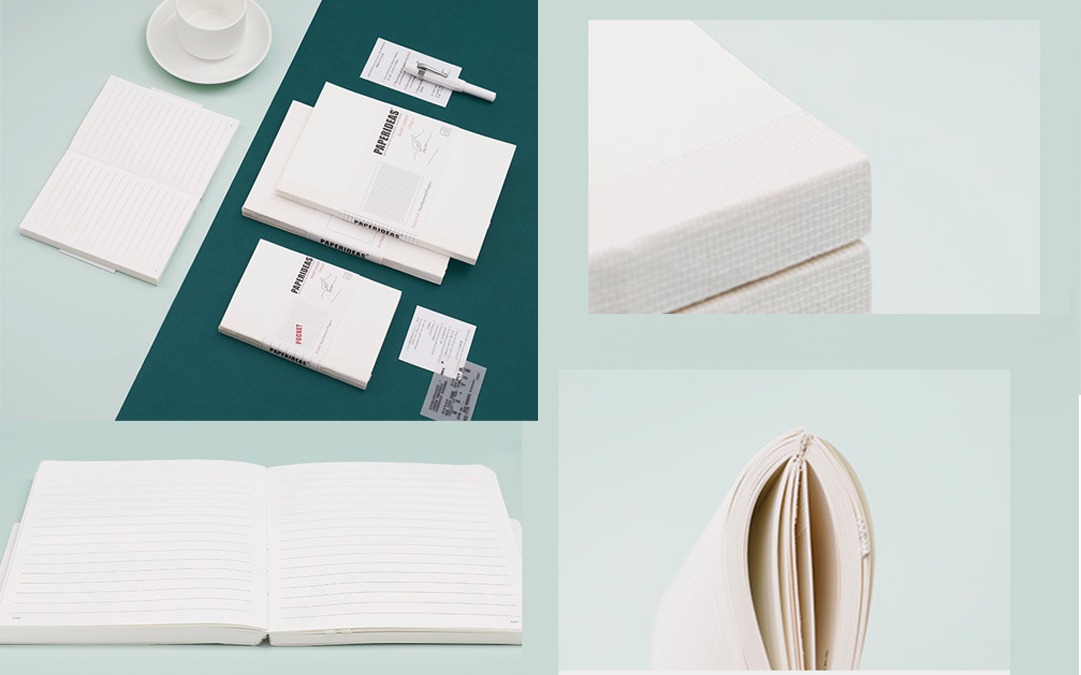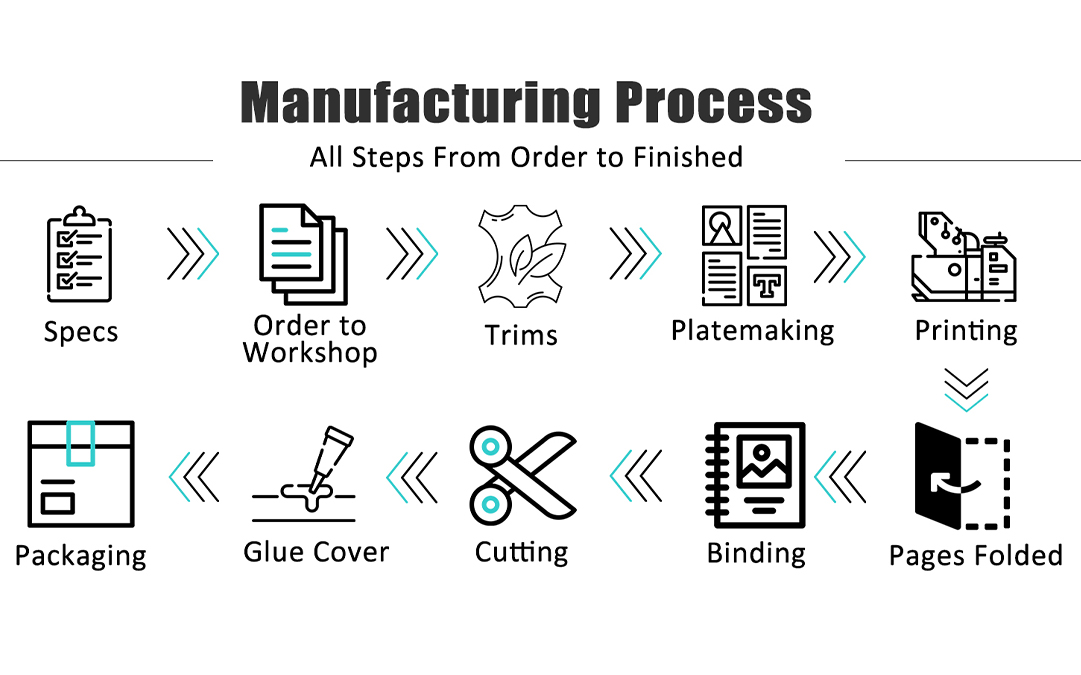Eco-Friendly Options for Custom Notebook Manufacturing
In today’s world, being eco-friendly is more important than ever, especially Custom Notebook Manufacturing industry. As someone who offers custom notebook print services, I make sure to use sustainable practices at every step of the process. From choosing recycled paper to using biodegradable packaging, every decision counts. Here’s how we create eco-friendly custom notebooks, A5 planners, and notepads.
1. Recycled Paper for Notebook Manufacturing Pages
When I print your own notebook, the first step is selecting the right paper. I prefer using recycled paper for the pages. This helps save trees and reduces water and energy consumption during production. Recycled paper is made from post-consumer waste, which means it comes from previously used paper. I make sure the recycled paper is of high quality, so you get a smooth writing experience. Plus, I often use paper certified by the Forest Stewardship Council (FSC). This certification ensures the paper comes from responsibly managed forests. By using recycled paper, we support a circular economy and lower the environmental impact of our products.
2. Soy-Based Inks for Notebook Manufacturing
The next step in custom A5 Notebook Manufacturing is choosing the right ink. Instead of traditional petroleum-based inks, I use soy-based inks. These inks come from renewable soybean oil, making them more sustainable. Soy-based inks produce vibrant colors and sharp images, ensuring your custom designs look great. They’re also easier to remove during the recycling process, which helps create higher quality recycled paper. By using soy-based inks, I reduce the environmental impact and support farmers who grow soybeans. This choice aligns perfectly with my commitment to eco-friendly printing.
3. Notebook Manufacturing Eco-Friendly Binding Methods
Binding is a crucial part of making a custom A5 planner or Notebook Manufacturing. I offer several eco-friendly binding options like saddle stitching, perfect binding with biodegradable adhesives, and wire binding with recyclable materials. Saddle stitching uses minimal materials and is great for smaller notebooks. Perfect binding with biodegradable adhesives ensures the binding process doesn’t harm the environment. For wire binding, I use wires made from recyclable metals. These binding methods ensure durability and ease of use while keeping our products environmentally friendly.
4. Notebook Manufacturing Sustainable Cover Materials
The cover of a custom Notebook Manufacturing or planner is not just for looks; it’s also a chance to be eco-friendly. I offer covers made from sustainable materials like recycled cardboard, organic cotton fabric, and biodegradable plastics. Recycled cardboard is sturdy and perfect for printing custom designs. Organic cotton fabric gives a unique, tactile feel. For a modern look, biodegradable plastics made from plant-based materials are an excellent choice. These materials break down more easily than traditional plastics, reducing their environmental impact. By offering sustainable cover options, I help customers make stylish and planet-friendly choices.
5. Non-Toxic Coatings and Finishes
To protect and enhance the appearance of notebook covers, I use non-toxic coatings and finishes. Traditional coatings often contain harmful chemicals. Instead, I choose water-based or UV coatings free from volatile organic compounds (VOCs). These eco-friendly coatings provide the same level of protection and gloss without the environmental drawbacks. They’re also safer for workers and end users. By opting for non-toxic coatings, I ensure that our products are safe and sustainable from start to finish.
6. Notebook Manufacturing Biodegradable Packaging
Packaging is a significant part of the product lifecycle. I’m committed to using biodegradable packaging materials for our custom notebooks bulk orders. Instead of conventional plastic packaging, I use kraft paper, cornstarch-based plastics, and other compostable materials. Kraft paper is sturdy and recyclable, making it a practical choice. Cornstarch-based plastics biodegrade much faster than traditional plastics. This ensures that the packaging doesn’t contribute to long-term pollution. By choosing biodegradable packaging, I help reduce the overall environmental footprint of our products.
7. Energy-Efficient Production Processes
Sustainable notebook production goes beyond materials. It also involves the processes we use. I invest in energy-efficient production methods, like using machinery that consumes less power and implementing practices that reduce energy waste. For instance, I utilize digital printing techniques that require less setup and produce less waste compared to traditional printing methods. Additionally, I power our facilities with renewable energy sources like solar or wind power. By focusing on energy efficiency, I reduce the carbon footprint associated with notebook production.
8. Local Sourcing to Reduce Carbon Footprint
Whenever possible, I source materials locally to reduce the carbon footprint of our custom journal printing. Local sourcing supports the local economy and minimizes the environmental impact of transporting materials over long distances. By working with nearby suppliers for paper, ink, and binding materials, I ensure that the production process is more sustainable. Local sourcing also allows for better quality control and stronger supplier relationships. This approach aligns with my broader commitment to sustainability.
9. Eco-Friendly Transportation
In addition to using sustainable materials and production methods, I’m mindful of how we transport the finished products. I partner with logistics companies that prioritize eco-friendly practices, like using electric or hybrid vehicles and optimizing delivery routes to reduce fuel consumption. I also offer carbon-neutral shipping options for eco-conscious customers. These measures help ensure that the environmental impact of transporting notebooks is minimized. By focusing on eco-friendly transportation, I provide a more sustainable product from production to delivery.
10. Encouraging Customers to Recycle
Sustainability extends to the end of a notebook’s life. I encourage customers to recycle their notebooks once they’re no longer needed. To help with this, I provide information on properly recycling the different components, like paper, covers, and bindings. I also explore partnerships with recycling programs to help customers dispose of their notebooks responsibly. By promoting recycling and providing the necessary resources, I empower customers to contribute to a circular economy.
Conclusion
At the heart of our business, we prioritize eco-friendly practices for custom notebook printing. Whether you need a custom A5 planner, custom notepads bulk, or personalized notepads bulk, we ensure that every step is sustainable. From using recycled paper and soy-based inks to eco-friendly binding and biodegradable packaging, our commitment to the environment is unwavering. By choosing our services, you not only get high-quality, custom notebooks but also contribute to a greener planet. Join us in making sustainable choices with your next custom notebook print or planner printing project. Let’s work together to protect our planet while enjoying the beauty and functionality of well-crafted notebooks.
Contact Us: Ms. Rimo Lau





